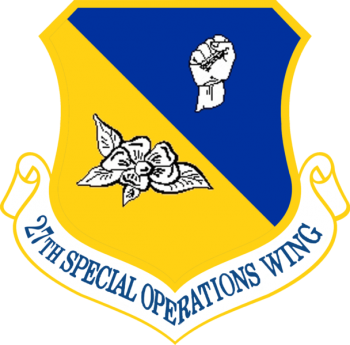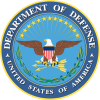27th Special Operations Wing, US Air Force
27TH SPECIAL OPERATIONS WING, US AIR FORCE
History:Established as 27 Fighter Wing on 28 July 1947. Organized on 15 August 1947. Redesignated as:27 Fighter-Escort Wing on 1 February 1950; 27 Strategic Fighter Wing on 20 January 1953; 27 Fighter-Bomber Wing on 1 July 1957; 27 Tactical Fighter Wing on 1 July 1958; 27 Fighter Wing on 1 October 1991; 27 Special Operations Wing on 1 October 2007. Fighter escort operations to meet Strategic Air Command commitments, 1947-1950. Won the Mackay Trophy for successful deployment of 90 F-84s from Bergstrom AFB, TX to Furstenfeldbruck AB, Germany, in September 1950 via Labrador, Greenland, Iceland, and England. This was the first long-range mass flight of jet aircraft in aviation history. Deployed at Yokota AB, Japan, 19-30 November 1950, then split into two echelons, one at Taegu AB, South Korea, 1 December 1950-30 January 1951, and the other at Itazuke AB, Japan, 9 December 1950-31 January 1951. Flew combat in Korea, 6 December 1950-30 June 1951, including armed reconnaissance, interdiction, fighter escort, and close air support missions. The two echelons combined at Itazuke on 1 February 1951, continuing combat from that base. Provided close support for largest airborne operation of the Korean War and escorted B-29 bombers to the Yalu River in North Korea, coming into conflict with enemy MIG-15 fighters. Returned to the United States in July 1951 but deployed to provide air defense at Misawa AB, Japan, 6 October 1952-13 February 1953. Added air refueling as a mission, June 1953-May 1955 and August 1955-June 1957. Deployed at Sturgate RAF Station, England, 7 May-17 August 1955. Maj Adrian E. Drew, a member of the wing, broke the world speed record on 12 December 1957. Deployed at England AFB, LA, 29 March-5 May 1961, and, during the Cuban Missile Crisis, at MacDill AFB, FL, 21 October-1 December 1962. Deployed at Holloman AFB, NM, 13 April-12 May 1966. Trained fighter pilots, mechanics, forward air controllers, and air liaison officers. Performed numerous small-scale deployments, both beyond and within the United States, to meet operational requirements. Took part in joint training exercises with U.S. Army forces. In 1990 and 1991, provided support personnel and equipment for operations in Southwest Asia to liberate Kuwait. In 1992, added an electronic combat mission to its fighter role. Between 1992 and 1998, served as the only Air Force wing with operational F-111 or EF-111 aircraft. During the 1990s, deployed personnel and aircraft periodically to Southwest Asia for training exercises, expeditionary rotations, and enforcement of no-fly zones over Iraq. In 1998, began training Republic of Singapore F-16 pilots. After enemy attacks on New York and Washington in 2001, the wing deployed personnel and aircraft globally in operations associated with the War on Terror. Maintained rapid deployment capability and supported unified commanders worldwide. Converted from fighter to special operations role in October 2007; trained to execute precision strikes; provided specialized airpower for operational commanders; supported intelligence, surveillance, and reconnaissance missions for special operations forces.
| English | blazon wanted |
Origin/meaning
The Emblem was approved for Group on 12 September 1940 and for Wing on 11 July 1952; latest rendering, 23 October 2018.
Literature: Image from Wikimedia Commons. Information from https://www.afhra.af.mil/
US heraldry portal
This page is part of the US heraldry portal |
Heraldry of the World |
|
US heraldry:
|
Ecclesiastical Heraldry of the USA:
Military Heraldry: |
Contact and Support
Partners:
Your logo here ?
Contact us
© since 1995, Heraldry of the World, Ralf Hartemink 
Index of the site















